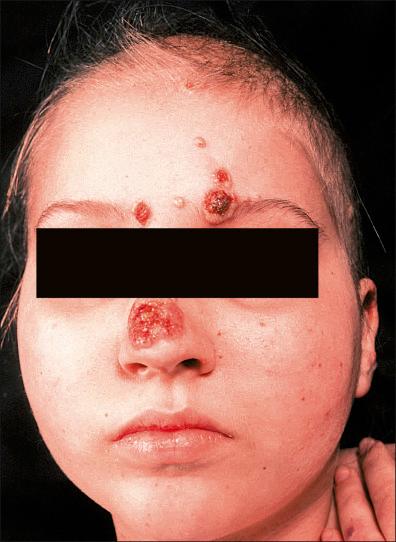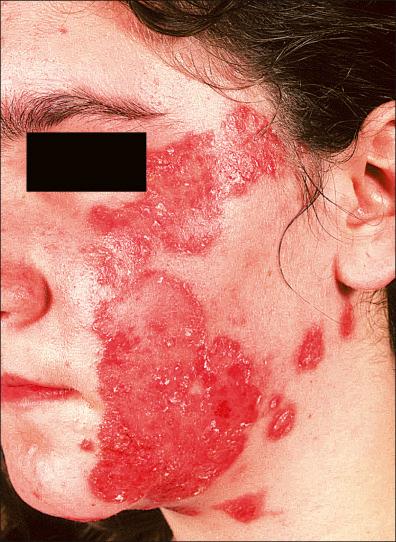Physical Address
304 North Cardinal St.
Dorchester Center, MA 02124
Pyodermas caused by Gram-positive cocci are a significant cause of morbidity and comorbidity in developing countries.
Antibiotic resistance, empiric and inadequate therapy, and cost of new antibiotics impede efforts to reduce prevalence of cutaneous skin infections.
Toxin production is associated with increased severity and mortality of infections.
Poststreptococcal glomerulonephritis may occur.
Lack of resources (clean water, sanitation, public health surveillance) contributes to morbidity and persistence of pyodermas.
For the future, the main challenge is to keep the wealthier parts of the world, where most medical research and development takes place, interested in the problems of their less affluent tropical neighbors. Many of these drug-resistant tropical infections do not respect international borders, and their ecology is likely to change with increasing international travel and global warming.
Throughout the tropical world and developing countries, the Gram-positive cocci, Staphylococcus aureus and Streptococcus pyogenes , are a major health problem and a significant cause of morbidity among both children and adults. No large-scale epidemiologic studies have been performed recently, but numerous regional and local prevalence surveys of bacterial pyodermas attest to the widespread nature of these infections. In a 1993 survey of skin diseases in rural East Africa, the prevalence of dermatoses in children was 32%, with over a quarter of these dermatoses (27%) being bacterial infections. The lack of skilled dermatological care, paucity of affordable antibiotics, and an alarming increase in the prevalence of antibiotic-resistant organisms are cited as reasons for the high levels of cutaneous infections in these regions. Equally important, however, is the need to address socioeconomic issues such as poverty; high household density (crowding); lack of clean water; chronic debilitating conditions such as malnutrition, intestinal parasites and malaria; and inadequate health education, which contribute to a persistence of cutaneous infections in the developing world. Bacterial pyodermas along with dermatophytoses and scabies represent the “dermatoses of poverty,” which will not decrease until living standards improve.
The relationship between the human host and bacteria is a complex interplay of factors, including virulence of the pathogen, toxin production, size of the inoculum, intrinsic host defenses, integrity of the skin, nutritional and immunologic status of the host, and environmental factors such as heat, humidity, and occlusion. In developing countries and the tropics certain factors, such as nutritional status, vitamin deficiencies, lack of sanitation and hygiene, as well as heat and humidity, play much larger roles in initiation and maintenance of skin diseases than in industrialized nations. An effective approach to reducing the burden of cutaneous infections requires awareness not only of the pathogens and antibiotic susceptibilities, but also of the factors that lead to persistence of disease. This chapter will examine skin infections caused by the two groups of medically important Gram-positive cocci: S. aureus and S. pyogenes .
Bacterial skin infections (pyodermas) may be primary (i.e., impetigo, ecthyma, cellulitis) when they arise on normal skin, or secondary when they complicate existing conditions such as atopic dermatitis, dermatophytosis, and scabies. Infections caused by Gram-positive cocci ( Table 21-1 ) are also classified as either superficial or deep.
| Tinea corporis | Annular, scaly, erythematous patches, intensely pruritic; vesicles may be present | Potassium hydroxide-positive, fungal culture |
| Herpes simplex | Grouped tense vesicles on an erythematous, edematous base; shallow, coalescing erosions | Tzanck prep, DNA, culture |
| Varicella | Febrile prodrome; tense vesicles on base (“dewdrop on rose petal”); crops of lesions in various stages | Tzanck prep, DNA, culture |
| Scabies | Punctate papulovesicles, burrows in web spaces of fingers, axillae, areolae, genitalia; intense pruritus | Scabies prep |
| Contact dermatitis | Sharply demarcated erythema with blisters and scaling | Epicutaneous testing |
The superficial staphylococcal pyodermas are classified as follows:
Impetigo and bullous impetigo
Folliculitis
Furunculosis and carbunculosis
Paronychia.
Impetigo: impetigo contagiosa, impetigo vulgaris
Bullous impetigo: tropical impetigo, impetigo bullosa
Worldwide, primarily caused by S. aureus , greater frequency of S. pyogenes in the tropics; also mixed infections.
Two forms: impetigo contagiosa (non-bullous) and bullous impetigo (caused by toxin-secreting S. aureus ).
Primary and secondary types exist.
Streptococci colonize normal skin; staphylococci may colonize the anterior nares.
Acute glomerulonephritis may complicate streptococcal skin infections.
The word “impetigo” is a Middle-English (fourteenth-century) derivation of the Latin word “impetere,” literally meaning “to attack.” It has come to mean a pustular skin condition, usually involving the face, characterized by the formation of scabs and crusts.
Impetigo (non-bullous impetigo) occurs most frequently in children, with an equal distribution of males and females. It is common in hot, humid climates, which encourage the growth of staphylococci on the skin. Worldwide, the non-bullous form of the disease is now caused predominantly by S. aureus , with a minority of cases caused by S. pyogenes (group A β-hemolytic streptococci), or both.
Bullous impetigo, caused exclusively by strains of S. aureus that secrete a toxin (exfoliatin), occurs most often in children under the age of 2.
The early clinical presentation of impetigo is that of grouped, fragile, thin-roofed vesicles that rapidly become cloudy pustules and then rupture. The resulting secondary lesions consist of patches of honey-colored, erythematous and crusted erosions that are most often found on the face, neck, and extremities. In most cases, patients are otherwise well, but regional lymphadenopathy may be present.
In temperate climates bullous impetigo is more common in newborns, but in warm tropical environments it may present as an acute bullous eruption of the axillae, groin, and hands in adults. In the neonatal period, it develops within the first 2 weeks of life with lesions initially developing on the face and hands. Later, lesions may generalize to cover large parts of the body. Bullae are typically large, tense, and cloudy and rupture easily, leaving a shiny, varnish-like crust over the affected area.
A skin biopsy of an intact lesion shows an accumulation of neutrophils below the stratum corneum of the epidermis with a few rounded acantholytic cells. Numerous Gram-positive cocci are seen. In the bullous form, a thin layer of stratum corneum forms the roof of the blister, which is filled with inflammatory cells and bacteria.
Primary non-bullous impetigo is generally diagnosed on clinical grounds, although laboratory support is occasionally necessary ( Fig. 21-1 ). It is important to remember that impetigo frequently complicates several underlying dermatoses such as scabies, insect bites, atopic dermatitis, or dermatophytosis ( Fig. 21-2 ). Therefore, it is important to accurately diagnose and treat any underlying disorder so as to reduce the risk of relapse ( Table 21-1 ).


In situations where laboratory confirmation is important (epidemics, failure to respond to previous therapy, concern over nephrogenic streptococci), a Gram stain from an intact pustule or the base of the erosion will show Gram-positive cocci in chains (streptococci) or clusters (staphylococci). Culture on selective media with antibiotic sensitivities is necessary when methicillin resistance is suspected or when there is a failure to respond to appropriate therapy.
The decision to use topical or oral antibiotics must be made on the basis of extent of disease, age and health status of the patient, presence of constitutional symptoms, and response to previous therapy. Table 21-2 outlines therapeutic options for treating non-bullous impetigo. Limited disease can be treated with frequent washing with hot soapy water followed by twice- or three-times-daily application of a topical antibiotic for a week. For more extensive disease systemic antibiotics are recommended.
| TOPICAL AGENTS |
| Bacitracin ointment |
| Mupirocin cream, ointment |
| Erythromycin |
| ORAL AGENTS |
| Erythromycin |
| Dicloxacillin |
| Oxacillin |
| Cephalexin |
Impetigo of Bockhart, superficial pustular folliculitis
S. aureus is the usual pathogen.
Other pathogens include Candida , Pseudomonas , Pityrosporum , herpes simplex virus, as well as chemical irritants and human immunodeficiency virus (HIV)-associated eosinophilic folliculitis.
Tense, yellowish pustules are pierced centrally by a hair; the usual locations are the scalp, face, axillae, upper back, inguinal area, buttocks, and extremities.
Diagnosis is made on Gram stain, potassium hydroxide, Tzanck prep, or culture if needed.
Topical antibiotics are given for localized disease, whereas oral antibiotics are administered for widespread, resistant, or deeper folliculitis.
Become a Clinical Tree membership for Full access and enjoy Unlimited articles
If you are a member. Log in here